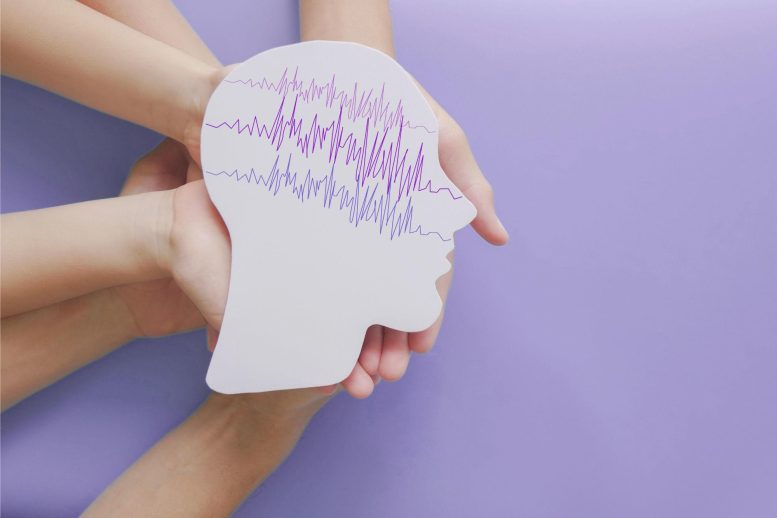
A new survey sheds light on the common misconceptions about seizures, stressing the need for public awareness of their varied and subtle symptoms. It underscores the importance of accurate diagnosis and treatment to improve patient outcomes and prevent SUDEP.
Seizures often differ from their dramatic portrayals in films. Recognizing less obvious symptoms, such as laughter or lip-smacking, can be crucial for diagnosing and treating epilepsy effectively.
If you’ve watched a film or TV series where a character experiences a seizure, your image likely includes someone collapsing with full-body spasms and foaming at the mouth. But that doesn’t necessarily reflect reality. A new national survey by Orlando Health finds that while most Americans recognize those classic symptoms of what’s called a generalized tonic-clonic seizure, the majority fail to recognize the subtle signs, all of which can be dangerous and have a profound impact on the lives of those suffering from them.
“Anything that interrupts your brain’s circuit can cause seizures, from tumors, infections, and strokes to high or low blood sugar or glucose levels to inherited genetic features. And different types of seizures can present with dozens of different symptoms,” said Dipali Nemade, MD, MPH, an epileptologist and neurologist at the Orlando Health Neuroscience Institute. “But because they often look different than those ‘cinematic seizures’ we see in movies and television, they can go undiagnosed for a long time.”
A new national survey by Orlando Health finds a majority of people are unaware of lesser-known seizure symptoms. Credit: Orlando Health
The survey, conducted by Ipsos, found less than half of Americans believe numbness or tingling (32%), blinking rapidly (35%), crying out or screaming (13%), and laughing (6%) are signs of a seizure, but Dr. Nemade says it’s important to pay attention to any odd or out-of-place behaviors and address them with your doctor.
“Even seizures with these less dramatic symptoms can make everyday activities like driving and cooking dangerous. For some people, their seizures present outwardly with very subtle signs like smacking their lips, picking at their clothes or just staring into space, and it’s important to recognize when you or someone around you is experiencing them so they can be accurately diagnosed and treated,” Dr. Nemade said. “By looking at their brainwaves (EEG), we can see if those behaviors are being caused by seizures.”
Personal Experiences and Misdiagnosis
For Mike Sail, seizures start with a flushed feeling that travels from his abdomen to his throat, followed by raised arm hair causing his condition to initially be misdiagnosed as acid reflux. It wasn’t until he lost his memory of an entire week that he was finally referred to Dr. Nemade, who diagnosed his condition as epilepsy.
“I kept saying that it can’t be acid reflux because that doesn’t cause the hair on your arms to stick up,” Sail said. “For the most part, these episodes were not very disruptive. They only lasted a minute or two and usually only happened once every few weeks. Sometimes I’d have them while I was doing things like playing golf, and afterward I would just go about my business. So, I was shocked to find out they were seizures because it wasn’t what most people think a seizure looks like.”
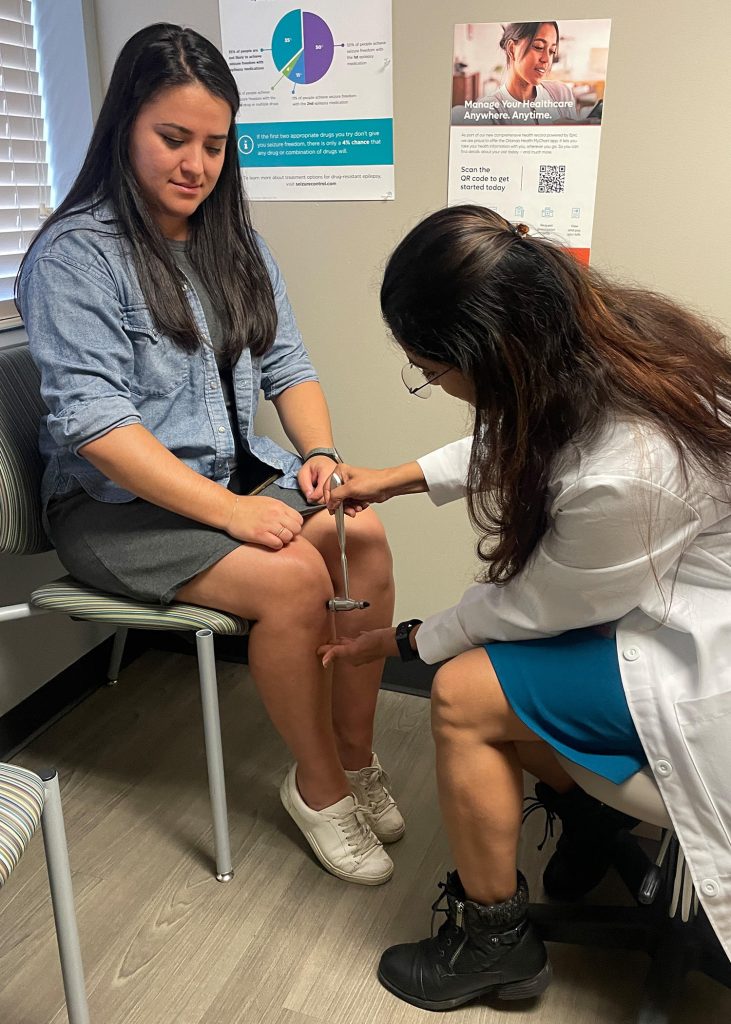
Dipali Nemade, MD, conducts a neurological examination on a patient at her clinical office at the Orlando Health Neuroscience Institute. The exam tests behavior, movements and mental function to assist in diagnosing seizures. A national survey by Orlando Health found that most people are unaware of many of the subtle signs of a seizure. Credit: Orlando Health
Like most cases, Sail’s epilepsy is well-controlled with anti-seizure medication, lifestyle changes, and adequate sleep, and he no longer fears that uneasy feeling he gets before having what he now knows were seizures. Dr. Nemade says education is needed to help others like Sail raise a red flag when they’re having unexplained symptoms on a regular basis.
“If people don’t know that these symptoms can be caused by epileptic seizures, their condition will be misdiagnosed or ignored and it will continue to affect their quality of life. That can be very isolating and frustrating, which is why many people with uncontrolled epilepsy experience anxiety and depression,” Dr. Nemade said. “Too many people never go to the doctor because they don’t feel like it is profoundly affecting their lives, or they don’t know how to explain what they’re feeling.”
Advanced Treatments and Preventing SUDEP
For rare cases of epilepsy that are resistant to anti-seizure medication, there are some advanced treatments that Dr. Nemade and her team offer at the Orlando Health Neuroscience Institute’s epilepsy center, such as intracranial monitoring (sEEG/subdural) and mapping the brain to find the exact spot where seizures are originating and removing a small piece of tissue.
If they are not able to remove the tissues safely, then neuromodulation options like responsive neurostimulation, deep brain stimulation, and vagus nerve stimulation are effective palliative options. It’s effective treatments like these that are not only improving lives, but also saving them by preventing sudden unexpected death in epilepsy, or SUDEP, which claims about 3,000 lives in the U.S. each year. But Dr. Nemade says they can only help if symptoms are recognized and action is taken.
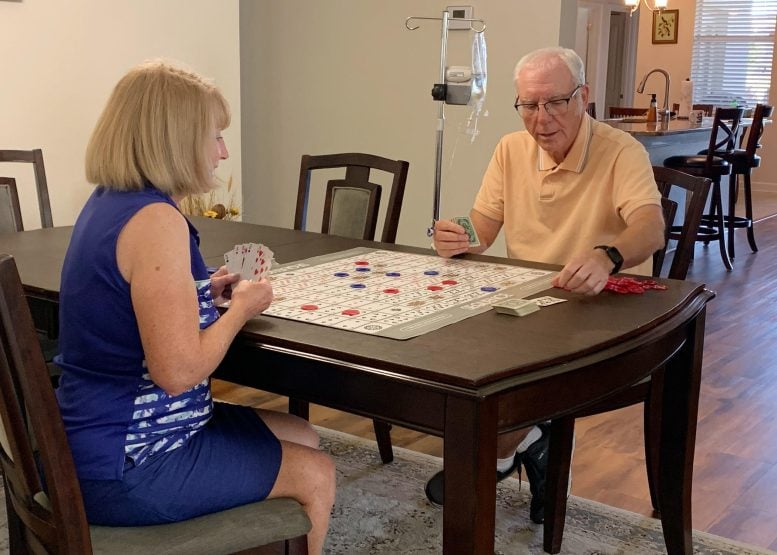
Mike Sail plays a board game with his wife, Ann, while hooked to an IV treatment as part of his seizure care plan. Hair standing up on his arms and a flushed feeling that starts in his abdomen were misdiagnosed as acid reflux until he underwent testing at the Orlando Health Neuroscience Institute to determine that, for him, these were symptoms of seizures. Credit: Orlando Health
If you suspect someone is experiencing a seizure, sit them down in a safe place without any sharp or heavy objects in their surroundings and ensure they can breathe freely until symptoms subside. If a seizure lasts more than five minutes, call 911. Those who have never received an epilepsy diagnosis or another explanation for their seizure should follow up with their doctor or a neurologist.
Details regarding the survey
The survey was conducted online within the United States by Ipsos on the KnowledgePanel from October 5 to October 8, 2023, and surveyed 1,024 U.S. adults ages 18 and older.
The poll is based on a nationally representative probability sample and has a margin of sampling error of plus or minus 3.3 percentage points at the 95% confidence level, for results based on the entire sample of adults.



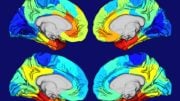


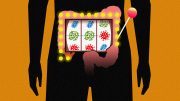


Dipali Nemade, MD : if you check reflexes with patient’s legs in this position, you’ll never get a response.